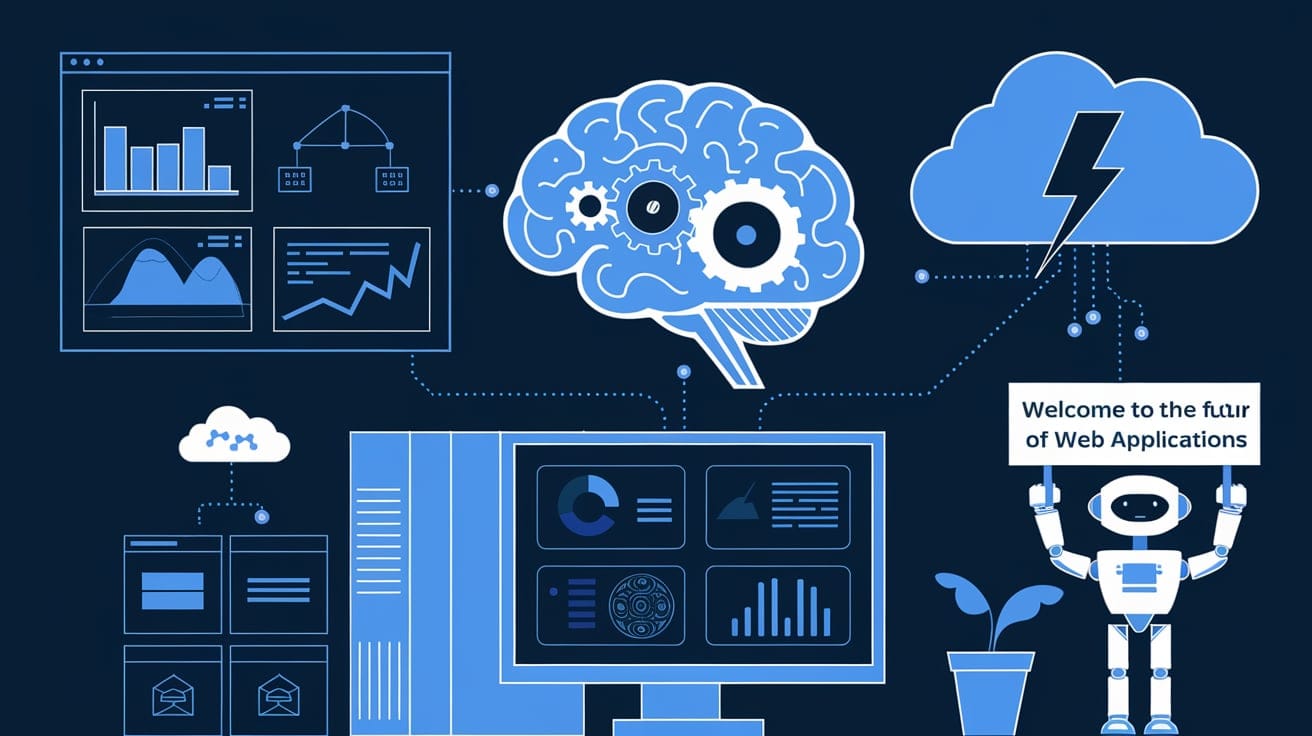

Are you ready to disrupt with AI? Join our Hackathon today! Click to Register
By WebOsmotic Team | Published on December 21, 2024
Summarize Article

Table of Contents
ToggleWhat comes to mind when you hear the word web applications? Beautiful designs, user-friendly interfaces, and fast load times? Those are important features. But have you ever wondered how websites and apps appear to ‘understand’ your actions? Provide personalized recommendations, or even detect fraudulent activity in real time? Enter Machine Learning (ML) – the game-changing technology that makes web applications smarter, more intuitive, and highly responsive.
In this blog, we offline and close machine learning for web applications and how it revolutionizes the digital landscape. Have you ever wondered how websites suggest your next favorite movie? Or how e-commerce sites predict what you might want to buy next? You’re about to learn the magic behind it all.
Before we get into how it works, let us establish the basis. Machine learning-based web applications can learn and adapt through no programming efforts in the future. In a nutshell, it is known to analyze millions of data inputs and understand patterns. Just like you are better at something through practice but here the practice is data!
And why does it matter in the web world? The answer is simple static, rule-based company and user system is not sufficient. There has to be development, evolution, and learning in real-time. And that is precisely what machine learning will do.
You are clicking away on any e-commerce website. Right there, you will have recommendations based on your past browsing habits. It may include similar purchases made by other users, or perhaps even your geographical location. This sounds personalized enough, doesn’t it? That’s machine learning for an application on the web at work!
Not only does machine learning show you products you might need, though. These algorithms are also helpful for providing modern web apps with personalized content. It predicts user behavior to keep things interesting. Some abilities websites can now have because of machine learning include:
“User-centered design” is turbocharged by instantaneous analysis of incoming data defined in real-time. The more data that a web app receives, the more it customizes its content to an individual’s preferences and behaviors.
After having an inkling about the what and the why, now venture into the how as well. The process through which developers integrate machine learning-web applications into their projects is quite elaborate, but a few key stages may be identified:
The first step in any machine learning model is data gathering. For a web application, this could be user behavior data, transaction history to raw material from the content they interact with.
Usually people would state that raw data is messy and machine learning models need clean data. The developers preprocess the data so that it should be in the right format for the algorithm to learn from it.
There are lots of types of machine learning models that are better suited for copying, while others are for predicting. The choice model will rely on what you want the web application to achieve, for example, recommend products or detect fraud.
This is where the magic happens. Here, the algorithm ‘learns’ through combining and shifting itself towards accurate prediction or classification.
The model being trained is tested with new data to understand its performance. It identifies areas of fine-tuning by developers.
Eventually, all adjustments are made, and the model is put into the web application. This enables it to be used in real time to offer smarter and more personalized user experiences.
Predictive analysis is one of the most powerful applications of machine learning web-based applications. For enterprises, predictive analytics can bring insights into what future trends will be, so they can make better decisions. Here are the ways in how predictive analytics enhances web applications:
Using machine learning to predict the needs or wants of users drives website applications to become more welcome. Itpropelsl business growth by ensuring that the customers satisfy even their very basic needs.
These are some of the days where we grossed data illimitably. Websites and applications spew an enormous amount of data every passing second. So how can the organization harness all that data? The answer is through machine learning in web applications.
This allows the web apps to analyze data and extract useful insights from it for making better decisions, better user experience, and more efficient operations. Be it personalizing content, predictive analytics, or fraud detection, machine learning transforms how we engage with the Internet.
So, now it will be clear to you that machine learning-based web applications can transform user experience. It boosts the effectiveness of operation, and significance, and exploits the full potential of data. An important argument can be put forth to persuade the developer to use machine learning in a web application. It can make the business owner consider this technology to stay ahead of the competition. There is no more option for machine learning; it must be.
Have you started integrating any form of machine learning for web applications? What stops you from building that smarter, more intelligent web experience? It has arrived-the future of web development, powered by machine learning.
Unlock exclusive insights and expert knowledge delivered straight to your inbox